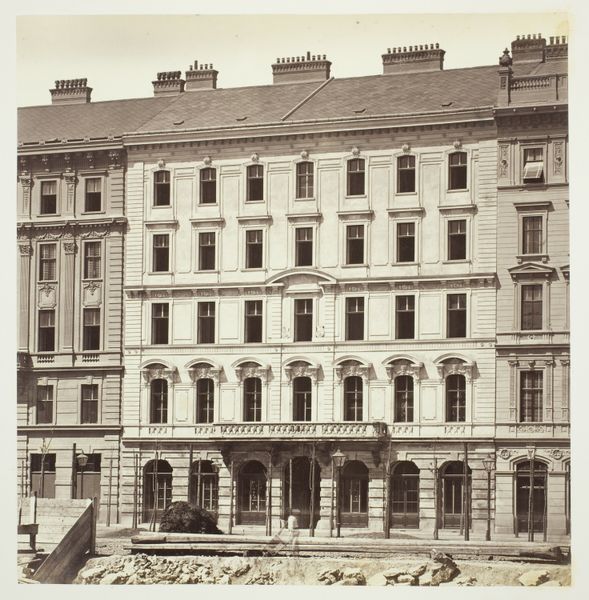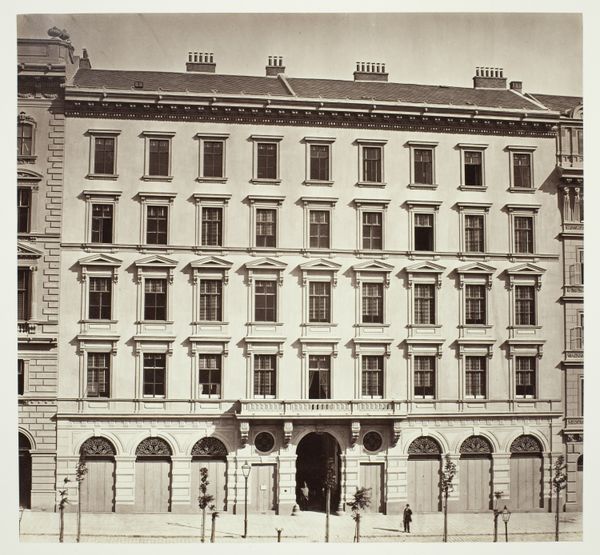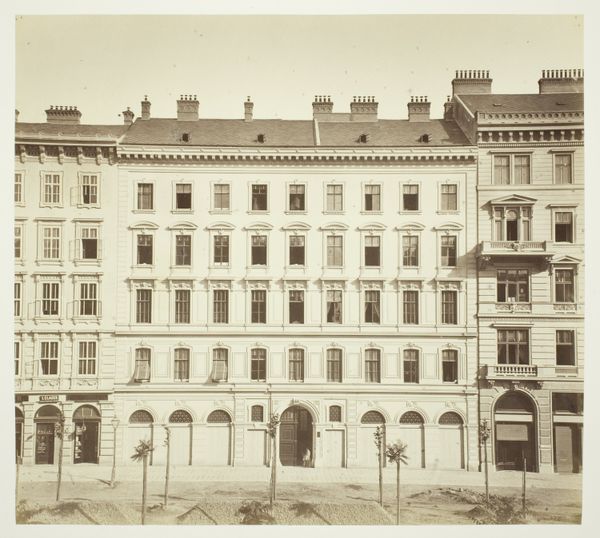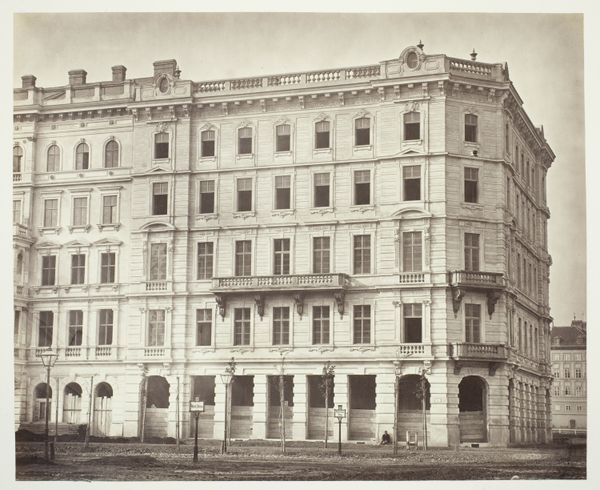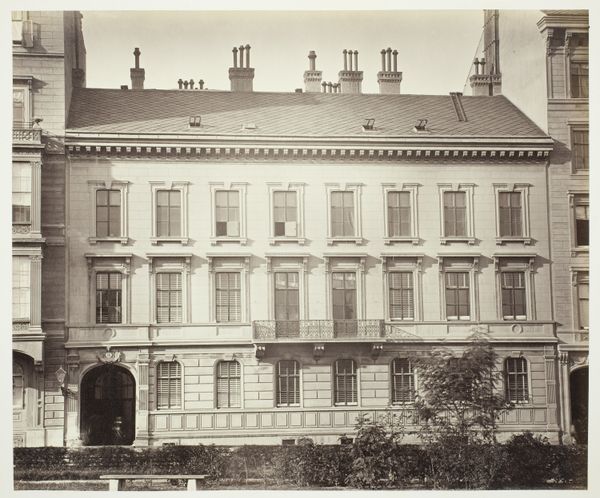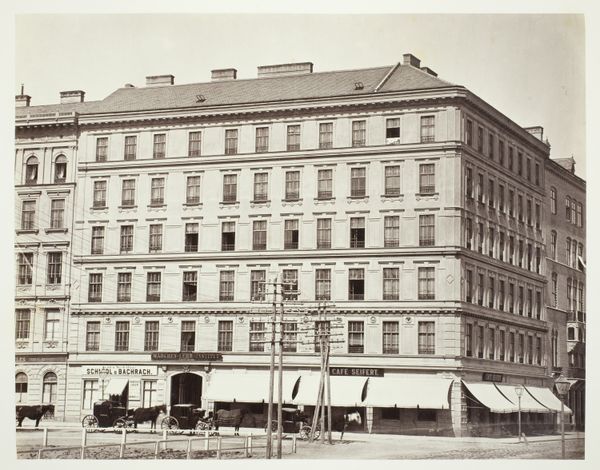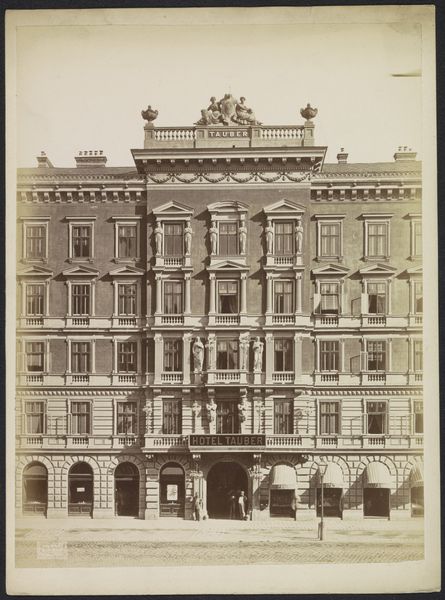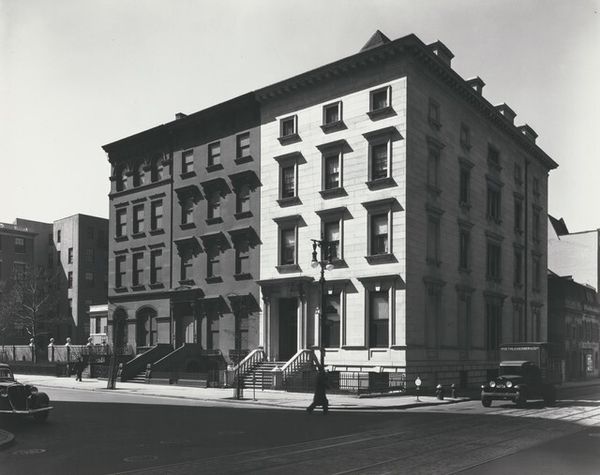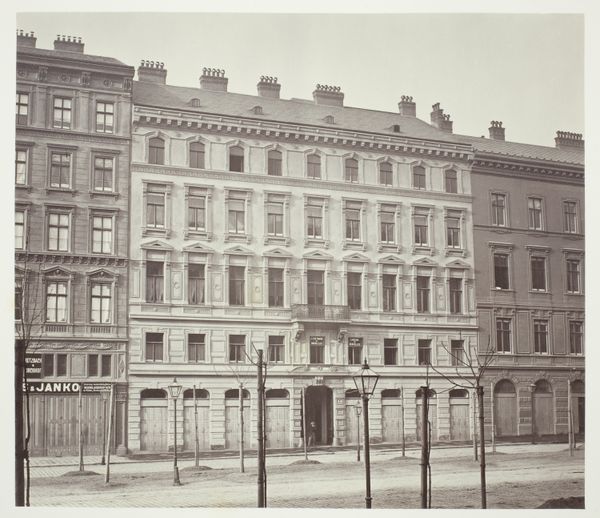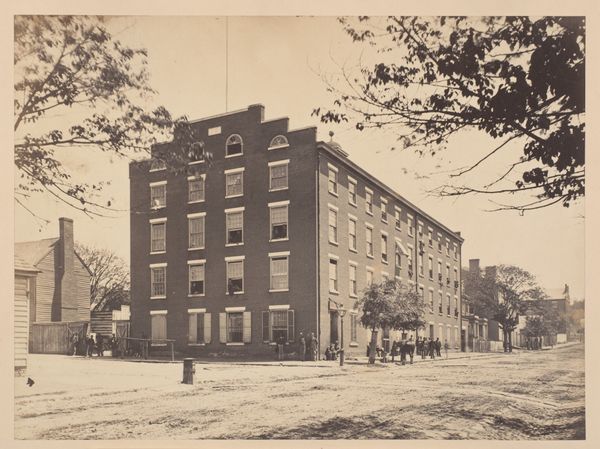
Kolowrat-Ring No. 12, Wohnhaus des Grafen Eugen Kinsky c. 1860s
0:00
0:00
Dimensions: 28.1 × 30.8 cm (image/paper); 42.8 × 61.2 cm (album page)
Copyright: Public Domain
Curator: Let's take a look at this photograph, "Kolowrat-Ring No. 12, Wohnhaus des Grafen Eugen Kinsky," placing it right around the 1860s. The Art Institute holds this stunning example of architectural photography from that period. Editor: My first impression? Austere. Almost intimidating with its symmetrical facade and regimented windows. But there's also a quiet elegance. It’s like a silent fortress observing the world go by. Curator: The image documents the Kinsky Palace, a grand example of neoclassical architecture which had its revival throughout Europe at this time. Notice how the photographer uses the play of light and shadow to accentuate the building's strong, clean lines, really emphasizing the social standing through the architecture. Editor: I'm struck by how "un-peopled" it feels. You expect to see carriages, maybe some figures bustling about. But its emptiness gives it this uncanny timelessness. It’s like a stage set waiting for a drama to unfold. Or maybe the drama already happened. Curator: Indeed. The photograph serves as a cultural document, presenting the architectural ambitions and values of the Viennese elite. Its clean and precise visual design reflected aspirations to maintain power in a changing political climate. Editor: Thinking about photography itself at that time, it would have been quite a statement for them to see their homes captured in such detail. Do you think they worried about posterity at all? It is interesting, too, how these structures try to embody eternal stability, while a photographic act introduces the dynamic nature of observation and documentation. It's almost… subversive. Curator: Absolutely. While it reflects their desire for permanence and visual legacy, photography inadvertently democratizes the imagery by bringing it into public circulation. This period marked a critical juncture where power and representation began shifting. Editor: A still photograph can never truly represent its era, and it’s impossible to capture everything. But seeing architecture detached from our current experience and presented so candidly lets the mind wander—a very strange sensation indeed. Curator: This image provides a unique perspective into the evolving intersection of architecture, power, and the rise of photographic documentation in mid-19th century Europe. It helps us visualize the epochal changes happening then, beyond the confines of textbooks. Editor: And in some ways, the Kinsky Palace will still outlive us, gazing at our present from within this monochromatic square. Very eerie to contemplate how things last!
Comments
No comments
Be the first to comment and join the conversation on the ultimate creative platform.
